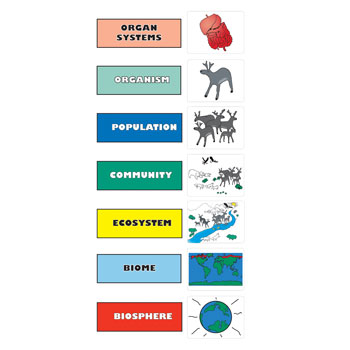The hierarchy of compound biological systems and structures, defining life with the help of the reductionist type of approach is termed as abiological organization. The biological organization extends from the atoms and goes till the biosphere. When you look at the higher levels of this organization, it is called the ecological organization.
The levels of hierarchical organization might be a bit complex as each level is initially composed of the basic unit of the previous level.
The hierarchical organization of life is the basic theory for different scientific research areas. With the help of this degree, it becomes easy for people to implement the study of the effects of the different chemical as well as physical phenomena to physiology and diseases.
Like, behavioral and cognitive neuroscience exists because of the brain is composed with some specific types of cells and the fundamental concepts of pharmacy exist only because we know that the entire organism might get affected due to a change in cell levels in the body.
Even the ecological organization might face such things. Some of the examples are DDTs direct insecticidal might affect the higher level as well as the subcellular level which might include the various ecosystems too. If you follow the theory, then the slightest change in an atom can change our entire biosphere.

Simple Standard Biological Organization
-
Cellular and Pre-Cellular Level
This level contains:
Atoms
Molecule: it contains a group of atoms
Biomolecular Complex: it contains a group of biomolecules
-
Subcellular Level
This level contains organelle which is made from the functional groups of biochemical, bimolecular reactions and interactions.
-
Cellular Level
The cellular level contains the cell which is the fundamental unit of life and it is a group of organelles.
-
Multicellular or Super cellular Level
The Multicellular level contains some functional parts. They are
- Tissue: a group of thecell together makes a tissue.
- Organ: comprises various functional tissues.
- Organ System: The organ system comprises different functional organ.
- Ecological Levels
The ecological level contains many subcategories like
- Organism: it is the fundamental of all living systems. It might have one or more cells formed by the elements of the lower
- Population: organisms of the identical groups come together to create population
- Community: when Inter specific species try to interact with the population it becomes a community.
- Ecosystem: a combination of the organism from the different biological domain in the physical environment makes up the ecosystem.
- Biome: grouping of the ecosystem on the basis of geographical areas and climatic conditions.
- Ecosphere or Biosphere: it contains all abiotic or the physical environment on Earth.
When you enter into the complex schemes you will get through many more levels of the organizational hierarchy. From the above mentioned categories, you can now understand that the atom will get divided into more subatomic particles. You can breakdown each level and make its own hierarchy. If you are taking any specific biological object, then you can divide it to make its own hierarchy scheme. One such example is of genomes which can be divided into a hierarchy of genes.
You can give the description of each level according to the needs with the help of its lower levels. Here is an example for better understanding; you can explain an organism on the basis of its component level, which might include the cellular level, molecular level, tissue level, atomic level, organ level and organ system level. As you go to the different levels you will find their functions are changing. The lower level elements are not competent to make these changes, so they are known as emergent properties.
Now you understand that every organism is well structured, it might not be to the same degree, but they can be structured according to their level of composition. For example, an organism can be structured according to the tissue or historical level if it is not made of tissue in as the basic component.
Essentials of an Organizational Hierarchy
We are observing a large percentage of complex biological hierarchy in the nature that displays the hierarchical structure. If we count on theories, then we can anticipate the complex systems to be hierarchies which get evolved from the simple level or the lower levels. The basic foundation of the System hierarchy was done in the 1950s, which analyzed the field structure from 1980s calling it the hierarchical ecology.
Thermodynamics summarize the theoretical foundations. When you model the biological system as the physical system, in the simplest concept, it becomes a thermodynamic system. This system demonstrates theself organizedbehavior. The relations between the dissipative structures among its subset or sets can be considered as a hierarchy.
Ecology by Odum is one more simple way to explain the basics of the hierarchical organization of life. The other one is Simon’s hierarchical principles.
